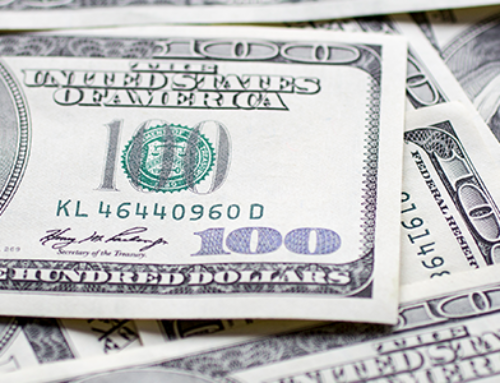Live Tariff Tracker: Plan Better, Bid Smarter
Recent U.S. tariffs on steel, aluminum, energy, autos, pharmaceuticals, and semiconductors – along with retaliatory tariffs from trading partners – have undeniably raised costs in the short term. However, proactive small and mid-sized builders, contractors, and construction trades are finding silver linings. By adjusting strategies and leveraging the changing market, these firms can reframe tariffs as potential advantages. Below we explore key positive impacts and opportunities emerging from the tariff landscape, with examples and quotes to illustrate each point.
| Source → Target | Tariff/Action | Effective Date | Status / Notes |
|---|---|---|---|
| 🇺🇸 → All countries | Universal import tariff of 10% (“Liberation Day” tariff) | April 5, 2025 | In effect. Applies globally, excludes items under steel, auto, and semiconductor tariffs, as well as USMCA goods. |
| 🇺🇸 → 🇨🇳 | Reciprocal tariff of 34% (plus earlier 20%) | April 9, 2025 | In effect. Adds to previous fentanyl-related 20% tariff, totaling up to 54%. |
| 🇺🇸 → 🇯🇵 | Reciprocal tariff of 24% | April 9, 2025 | In effect. Targets Japan’s barriers on U.S. exports. |
| 🇺🇸 → 🇪🇺 | Reciprocal tariff of 20% | April 9, 2025 | In effect. Response to estimated EU trade barriers. |
| 🇺🇸 → 🇻🇳 | Reciprocal tariff of 46% | April 9, 2025 | In effect. Reflects high perceived trade imbalance with Vietnam. |
| 🇺🇸 → 🇨🇦 | 25% tariff (10% on energy/potash), USMCA-exempt | March 4, 2025 | In effect. Linked to border enforcement. Canada responded with matching tariffs. |
| 🇺🇸 → 🇲🇽 | 25% tariff, USMCA-exempt | March 4, 2025 | In effect. Linked to migration concerns. Retaliation expected. |
| 🇺🇸 → 🌐 Steel | 25% global tariff (Section 232) | Revised March 12, 2025 | In effect. Revoked exemptions for allies. Not subject to 10% baseline tariff. |
| 🇺🇸 → 🌐 Aluminum | 25% global tariff | Revised March 12, 2025 | In effect. Increased from 10%. Exempt from 10% universal tariff. |
| 🇺🇸 → 🌐 Auto Sector | 25% tariff on vehicles, parts | April 3, 2025 (parts: May 3) | In effect. USMCA-exempt. Tied to Section 232 review. |
| 🇺🇸 → Sector Reviews | Copper, wood, semiconductors, pharma | Reviews due Nov. 2025 | In progress. Could lead to future tariffs. |
| 🇨🇳 → 🇺🇸 | 15–34% retaliatory tariffs on U.S. goods | March–April 2025 | In effect. Targeting agriculture, autos, tech. |
| 🇨🇦 → 🇺🇸 | 25% retaliatory tariffs | March–April 2025 | In effect. Targeted U.S. goods incl. wine, cars. |
| 🇲🇽 → 🇺🇸 | Planned retaliation | Expected April 2025 | In planning. Expected to impact U.S. farm and steel exports. |
| 🇪🇺 → 🇺🇸 | Reinstated & new retaliatory tariffs | Mid-April 2025 | Announced. Response to steel/aluminum duties. Includes whiskey, motorcycles. |
Boosting Domestic Production and Supply Stability
Surge in U.S. Manufacturing Output: Tariffs are driving demand toward American producers, prompting domestic mills and factories to increase output. In fact, after the 2018 steel and aluminum tariffs, U.S. steelmakers ramped up production and capacity utilization jumped to around 80%, hitting a long-sought benchmark for viability. Reuters noted that “domestic production of these metals rose” following tariffs – U.S. steel output grew by 6 million tons and aluminum by 350,000 tons by 2019. As one economist explained, “Tariffs can encourage U.S. steel and aluminum producers to ramp up capacity or restart idled plants”. This resurgence of U.S. production means builders have more local supply to source from.
New Investments and Reopened Facilities: Protected by tariffs, domestic manufacturers are reinvesting in America. For example, in early 2025 global steelmaker ArcelorMittal announced a $1.2 billion steel plant in Alabama, shifting an expansion from Brazil to the U.S. to boost “steel independence”. The plant will create 200 jobs and supply the growing electric vehicle industry domestically. Industry groups heralded the move, applauding tariffs for “[level]ing the playing field for American manufacturers”.
Likewise, U.S. aluminum producers have expanded output under tariffs, and while few new smelters opened, a study found initial tariffs boosted production in 2018 until loopholes undermined the effect. In the energy sector, tariffs on imported equipment (e.g. solar panels, batteries) are aligning with policies to expand U.S. clean-energy manufacturing, supporting new factories for solar panels and EV batteries. All of these trends point to more local capacity and less import dependence, a long-term benefit for builders who rely on these materials.
Price Stability and Predictability: Although tariffs caused initial price spikes for inputs like steel and aluminum, markets have begun to stabilize at a new normal. As domestic supply increases and panicked buying subsides, prices become more predictable. “History has shown that markets often stabilize as businesses adjust, finding alternative suppliers or increasing domestic production,” notes a construction industry report.
After the 2018 tariffs, many companies benefited from “a more stable long-term pricing environment” with “more predictable pricing as reliance on foreign imports decreased”. In other words, once U.S. mills ramped up and buyers diversified, there was less volatility than during events like the COVID shortages. There’s even a natural check on domestic prices: if U.S. steel or aluminum gets too expensive, buyers can still import and pay the tariff, so domestic mills must stay competitive. This dynamic protects builders from runaway prices, unlike supply shocks where material was unavailable at any price. For small contractors, price predictability is crucial – it helps them bid and budget jobs with more confidence over the long run.
Turn Local Trends into Strategic Moves – Get the BPA
Opportunities for Proactive Builders and Trade Businesses
Strategic Purchasing & Stockpiling: Contractors who plan ahead can turn tariff volatility to their advantage. By pre-ordering and bulk-buying materials before tariff deadlines or further hikes, builders have successfully averted cost increases. In early 2025, many contractors “rushed to stock up on materials ahead of the deadlines” when new tariffs were announced. For example, one North Carolina contractor noted, “we have seen some projects pull forward to expedite procurement and lock in prices before the full effect of the tariffs is in the market.”
Improved Contracts and Risk Management: Tariffs have prompted construction businesses to get more savvy with contracts and pricing clauses. Rather than be caught off guard, many are adding price-escalation clauses or material cost allowances to their contracts, so that sudden tariff-related cost jumps can be passed through or shared. “Construction companies that plan ahead, lock in pricing and adjust contracts can turn tariff challenges into long-term stability and growth,” an industry advisory emphasized. Some firms successfully inserted clauses to mitigate risks, while others renegotiated supplier agreements. Builders who locked in fixed prices with suppliers early were able to avoid the brunt of increases, whereas those who didn’t often had to absorb the costs.
Communication is key as well – Fourth Elm Construction explained that because of tariff volatility, they are locking in vendor prices ASAP and communicating with clients so “there are no surprises”. By proactively addressing tariffs in their contracts and client discussions, savvy contractors maintain client trust and project viability, even using their preparedness as a selling point to win business.
Diversified Sourcing & New Supplier Relationships: Tariffs push companies to broaden their supply chains, increasing resilience. Builders and suppliers unwilling to pay tariffs have sought out alternative sources, whether by buying American or importing from tariff-exempt countries. This creates an opportunity to forge new partnerships. Tariffs “encourage businesses to source materials domestically,” which can mean more reliable supply chains with fewer international disruptions.
Leveraging “Buy American” Preferences: With tariffs framing an environment of economic nationalism, builders who source U.S.-made materials may gain a marketing and compliance edge. Government projects and infrastructure bills often come with “Buy American” requirements or preferences. By already using domestic steel, aluminum, etc., small contractors can more easily qualify for those jobs or avoid waiver hassles. Even in private projects, being able to tell clients a home or building uses American-made materials can be a strong selling point.
Be Proactive, Not Reactive – Build Your BPA Roadmap
Strengthening Small Firms and Leveling the Playing Field
Level Playing Field for U.S. Businesses: A core aim of the tariffs is to counter unfair foreign trade practices – something that ultimately helps small and mid-sized U.S. firms compete. By raising the price of imports, “tariffs can protect home-grown manufacturers” and producers who were undercut by subsidized imports. The president of the Steel Manufacturers’ Association praised the latest tariffs as a way to “help ‘[level] the playing field for American manufacturers’”.
In construction, this leveling effect might mean a local steel fabricator or tool maker can finally compete on price with imported products. Small businesses that were struggling against a flood of cheap imports now have a better shot at winning orders.
For local contractors, more American manufacturing jobs can translate into more local projects – such as factories, warehouses, and housing for workers – and a healthier regional economy.
Domestic Job Growth (Selective): While not all tariffs produce huge employment jumps (due to automation and scale), there are still pockets of job gains that benefit communities. For example, the Greenwave recycling company mentioned earlier expects to hire approximately 50 additional workers thanks to heightened demand from domestic mills. New plants like the Alabama steel facility will create construction jobs now and 200 permanent jobs later.
Likewise, tariffs on pharmaceuticals could encourage building new U.S. production lines for certain high-value medications, creating jobs in pharma manufacturing that didn’t exist before. A Brookings analysis predicts tariffs will provide “a strong incentive for increasing U.S. manufacturing of brand-name drugs” (though additional policy support is needed for generics). If even a few drug or semiconductor plants return to the U.S., they bring construction work and supply orders that uplift local contractors and suppliers in their orbit.
Supply Chain Security and Resilience: Small builders stand to gain from the greater supply chain security that comes with domestic sourcing. Retaliatory tariffs from Canada, Europe, or China have made import supply lines less dependable or more costly. By contrast, materials sourced in the U.S. are insulated from these trade wars. One construction CFO noted that during volatile tariff news, clients “revert to strong relationships and trusted partners” to keep projects on track. This suggests firms with domestic, reliable supply chains become the trusted partners of choice, winning business over those who gamble on imports. Additionally, a more self-sufficient supply base in critical areas (steel, energy technology, medical supplies, microchips) means less risk of project delays due to geopolitical events.
Innovation and Adaptation: Facing tariffs, some small businesses have innovated in ways that strengthen them permanently. Contractors have learned to be more agile in project scheduling and material choices. Manufacturers have improved processes to cut costs (offsetting tariffs) or moved up the value chain to offer unique products not subject to tariffs. For example, a U.S. toolmaker might start offering specialized, custom tools that overseas competitors can’t easily match or ship quickly. These adaptations mean that even if tariffs eventually shift, U.S. firms have become leaner and more diversified. Builders who navigated tariff turmoil by adopting new technologies or cooperative buying groups continue to reap efficiency benefits.
Build Resilience and Competitive Advantage – Claim Your BPA
Positive Macro Frames and Future Outlook
Encouraging Policy Support: The tariff measures are part of a broader policy trend to revitalize American industry, which can benefit small firms through complementary initiatives. For instance, tariffs on Chinese semiconductors and batteries go hand-in-hand with the CHIPS Act and clean energy investments, aiming to “get ahead of China in advanced technology manufacturing, while also increasing supply chain control.” This coordinated approach means more government and private investment flowing into U.S. manufacturing, infrastructure, and workforce training – all of which help local contractors by spurring new projects.
Reshoring and Local Opportunities: Tariffs have undeniably put pressure on multinational supply chains, and as companies adjust, many are choosing to reshore or localize production to avoid trade risks. This presents opportunities for entrepreneurs and small manufacturers to fill niches domestically. We’ve seen stories of companies starting new production of formerly imported items – from steel nails to PPE to microchip components – in response to tariff-induced demand. Each reshoring creates ripple effects: local suppliers for raw materials, contractors for facility expansion, and service providers all benefit.
Using Tariffs as a Negotiation Tool: Finally, the current trade environment can be framed positively in negotiations. Builders and contractors can explain to clients that tariffs are an investment in our domestic capacity – a short-term cost for long-term gain. This narrative helps clients understand that by supporting projects now (even at a slightly higher cost), they are contributing to a stable local supply chain that will benefit everyone in the future.
Align With the Future – Get Strategic with the BPA
Planning Ahead: Tools to Navigate Uncertainty
In addition to immediate tactics, contractors need to think strategically for the long run. Trade tensions show no sign of abating soon – in fact, experts note that tariffs will likely remain a moving target in 2025. That means companies must build agility into their business plans. Staying informed on policy changes is the first line of defense. The recently launched Live Tariff Tracker has quickly become an essential resource, offering a real-time snapshot of relevant import duties and international responses. By checking the tracker regularly, a project manager can adjust procurement schedules and pricing before changes hit their bottom line.
But information alone isn’t enough – strategic planning is what turns knowledge into action. Industry consultants recommend that construction business owners take a hard look at their overall operations and prepare a game plan for various tariff scenarios.
One tool being touted to help with this is the Business Planning Assessment (BPA) offered by Small Business Growth Partners (SBGP). The BPA is an in-depth diagnostic and planning service developed specifically for small builders, remodelers, and trade contractors. It provides a comprehensive analysis of a company’s current business – from finances to supply chain management – and delivers a tailored plan of action. In an unpredictable environment, such a plan can be a lifeline.
“We designed the BPA process to give builders a three-year roadmap, even when the ground is shifting beneath their feet” – Chris Penasa, CEO at SBGP.
The BPA helps firms identify weaknesses and opportunities in areas like sourcing, pricing strategy, and risk management. For example, it might highlight an over-reliance on an imported product and suggest alternatives or contingency suppliers. It can also project how different tariff outcomes (a long-term trade war versus a quick resolution) would impact the firm’s cash flow, allowing owners to make informed decisions now rather than reacting in panic later. In essence, the BPA and similar business planning tools enable contractors to respond strategically to tariff shifts, rather than on impulse.
Many small contractors who underwent a BPA have reported feeling more confident in adjusting their business models – whether that means renegotiating supplier contracts, diversifying into new services, or simply budgeting more conservatively until volatility eases.
Builders who take the time to scenario-plan are in a better position to pivot when, say, a new tariff throws a wrench into their original plan. They might already have a Plan B supplier or an alternate design ready that uses less import-dependent material. This kind of agility can mean the difference between profiting from a project or seeing it turn into a loss due to circumstances beyond one’s control.
As this trade saga continues to unfold, one thing is clear: construction leaders must stay nimble. The combination of a live tariff tracker for day-to-day awareness and a solid business plan for long-term adaptation is emerging as the dual armor that can shield companies from the worst of the turmoil. Small and mid-sized builders have weathered storms before – from recessions to supply crunches – and those experiences have taught the value of adaptability. By staying alert, communicating openly, and planning ahead, they can not only survive the tariff tsunami but find ways to thrive in its wake.





